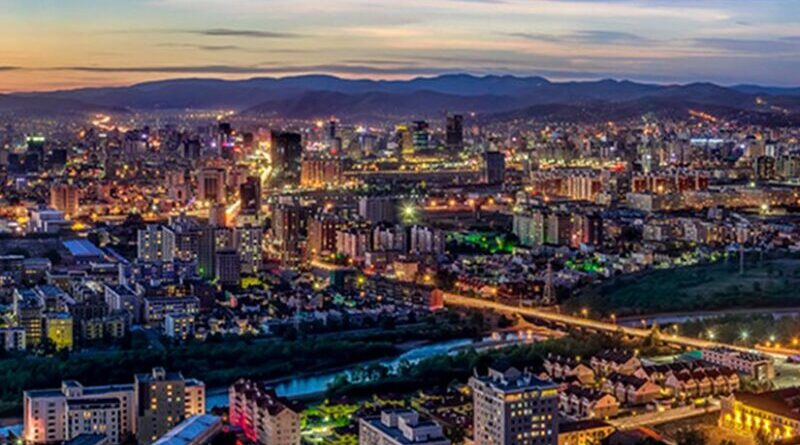Mongolia’s New Approach To Curb Air Pollution – Analysis
Mongolia’s air pollution has reached the point of affecting the country and city’s national security according to the Ulan Bator (UB) Post, an English-language Mongolian news site. Mongolia’s harsh winters require residents and businesses to burn coal. Ulan Bator seen an increase in pollution from coal burning furnaces and motor vehicles. Roughly half of Mongolia’s 2.8 million population lives in Ulan Bator. The air quality in Ulan Bator is comparable to the air pollution in Beijing and New Delhi.
In December 2016, Ulan Bator’s air quality registered five times as worse as Beijing’s and is 80 times more than recommended levels by the World Health Organization. Mongolia’s Gers (yurts) dwellings contribute to air pollution as they are on the outskirts of the city, use coal furnaces for heat, and are not connected to the city-level infrastructure. The uptick in ger settlements resulted in rapid and unplanned growth. Gers are a popular form of housing for migrants as housing prices have peaked in recent years. Sixty percent of the Ulan Bator population lives in gers. Mongolia’s “Ulaanbaatar 2020 Master Plan and Development Approaches for 2030” outlined developed of the Ger areas: the central area, middle area, and fringe area connecting the central area to the grid and the middle area partially to the grid. The fringe area, where Gers are located, will be replaced by private housing or low-rise buildings with self-sustaining utilities.
According to the UB Post on 17 January, three decrees will be presented at Mongolia’s National Security Council meeting. The Restriction Action decree states “rural residents, excluding those who require long-term medical care, those who already own an apartment, and those who have a mortgage loan, will be restricted from taking up residence in Ulaanbaatar.” The two other decrees, rooted in urban planning, will divide the city into zones including the establishment of “eco areas.” The establishment of air pollution zones will be introduced regulating what buildings and dwellings can use what energy source to produce heat. Rural to urban migration is impacting air pollution beyond seasonal migration or service-based migration—seeking medical services and employment.
The Ulan Bator city government, prior to the three decrees, implemented regulations to curb air pollution. To decrease vehicular traffic restrictions were placed on vehicles based on license plates’ numbers determining what days residents can drive their vehicles. The result would be less congestion, shorter commutes leading to less road time, and less vehicle emissions. A working group tasked with lowering air pollution has been working since June 2016 to develop a national approach. The government of Mongolia already passed the National Action Program on Climate Change (2011), Mongolian Environmental Action Plan, and the Action Program to Protect Air Quality.
The power plant outside of Ulan Bator will assist the city in reaching its electricity-output goals hopefully curbing air pollution. The Engie groupwill operate the plant, a combined heat and power facility called CHP5, for 25 years and will add to the Newcom’s 50-megawatt Salkhit wind farm built in 2013.
Ulan Bator lacks a comprehensive public transportation system and the city is sprawling because of ger settlements. Ulan Bator operates a rapid bus system financed by the Asia Development Bank by contributing $218 million to 64.5 kilometers (41 miles) of bus routes. Prior reporting from the UB Post states metro stations will be completed by 2020. An underground metro system is required because of population growth and would aid Ulan Bator in becoming a “compact city” and a green eco-city. The Ulan Bator (Ulanbataar) Clean Air Project, funded and approved by the World Bank in 2012, “is to enable consumers in Ger areas to access heating appliances producing less particulate matter emissions” and develop particulate matter reduction measures in Ulaanbaatar.
Mongolia signed the 2015 Paris Agreement and joined the Kyoto Protocol in 1999. Mongolia strives to meet Paris Agreement standards by curbing greenhouse gases and pollution by utilizing methodologies developed under the UN’s Clean Development Mechanism developed under the Kyoto Protocol and measuring emissions. Mongolia submitted its climate change action plan to the UNFCCC in September 2015. Mongolia also signed an Emissions-Reduction Pact with Japan in 2013.
Multiple international organizations including UNICEF and the World Health Organization warn Mongolia against the adverse effects of heavy smog and pollution. The country would benefit from a pollution management system. Strengthening Mongolia’s electric system, diversifying energy resources, and transportation options will also increase air quality and benefit Mongolia economically. Mongolia to control migration may expand of Ulan Bator to accommodate Ger developments to be later on developed, encourage settlement in peripheral cities, and develop rural areas which have been under stress since the 1990 reforms impacting agriculture.
*Samantha Brletich is a freelance writer and research on the region of Central Asia. She focuses on extremism and terrorism, governance, and multi-lateral policy in the region. She has a Master’s in Peace Operations Policy from George Mason University in the United States.


Thank you Samantha for the review. I would recommend you to use the spelling Ulaanbaatar for the capital city, as Ulan-Bator is inherent from Soviet times when all media was filtered through Russian
And further, the words Ulaanbaatar, mean “red hero” Ulaan means red, and Baatar means hero. It is pronounced, oh-lawn, baa tr.